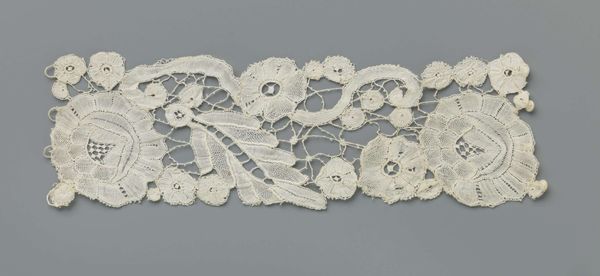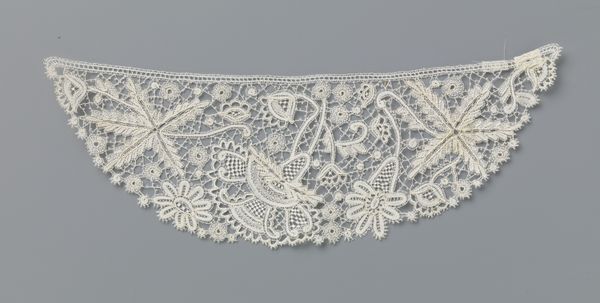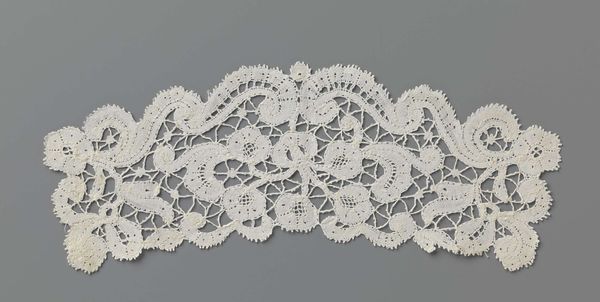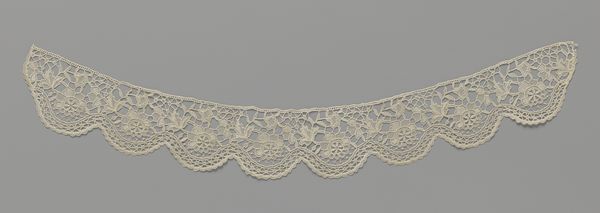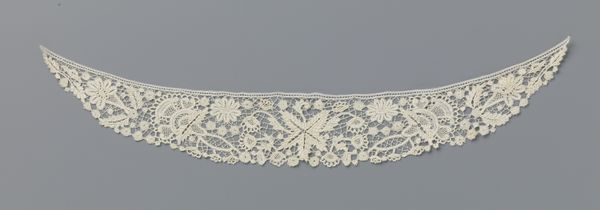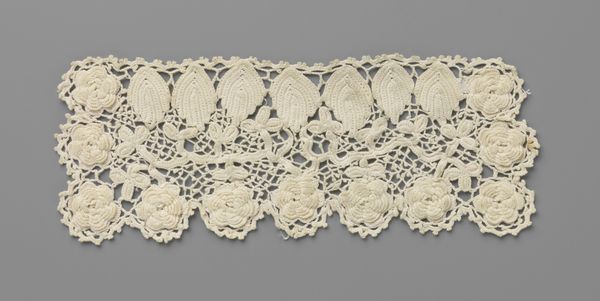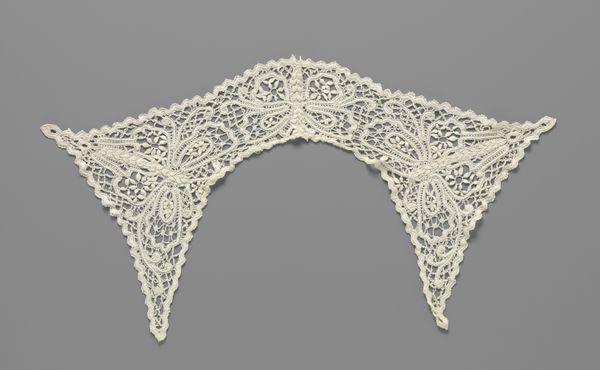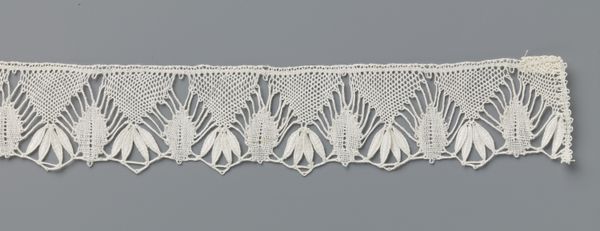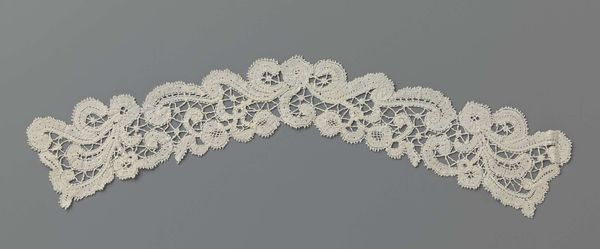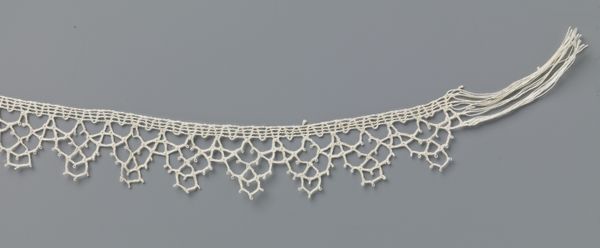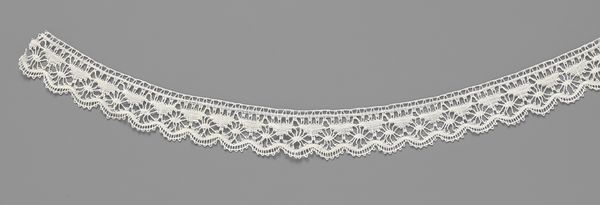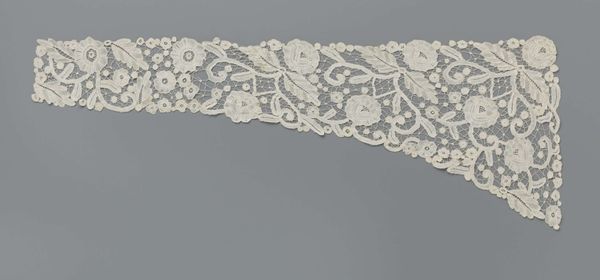
fibre-art, weaving, textile
#
fibre-art
#
arts-&-crafts-movement
#
weaving
#
textile
#
wearable design
#
wedding dress
#
decorative-art
Dimensions: length 74 cm, width 6 cm, 5.2 cm
Copyright: Rijks Museum: Open Domain
Editor: Here we have a length of bobbin lace with braided scallops, created by the Berliner Spitzenschule sometime between 1900 and 1924. It's so delicate, like solidified moonlight! What do you see when you look at this piece? Curator: Solidified moonlight... that's lovely. For me, it whispers of intimate rituals, perhaps adorning a bridal gown or veiling a cherished keepsake. Bobbin lace isn't just about patterns; it's about the hands that meticulously crafted it, the lives intertwined with each thread. It makes me think about women working together, maybe telling stories as they worked. Does the Arts and Crafts movement resonate for you here, with its rebellion against industrialization? Editor: Definitely! You can feel the dedication to the craft. I can imagine that close, social environment while working on something like that. How would you compare this kind of decorative art with the fine arts of the period? Curator: That’s a juicy question! In some ways, bobbin lace exists in its own ethereal dimension. While painting or sculpture sought to capture grand narratives or mimic reality, lace like this offered a more tactile, intimate rebellion. It was a space for personal expression, especially for women. What’s more “real” – a still life, or something that touches your skin? Is there something intrinsically subversive about beautifying everyday life? Editor: I hadn't considered it that way before, but now it seems quite revolutionary. Thank you. Curator: My pleasure. It just goes to show, beauty isn’t always found in the grand gestures but sometimes lives within the finest of threads.
Comments
No comments
Be the first to comment and join the conversation on the ultimate creative platform.
